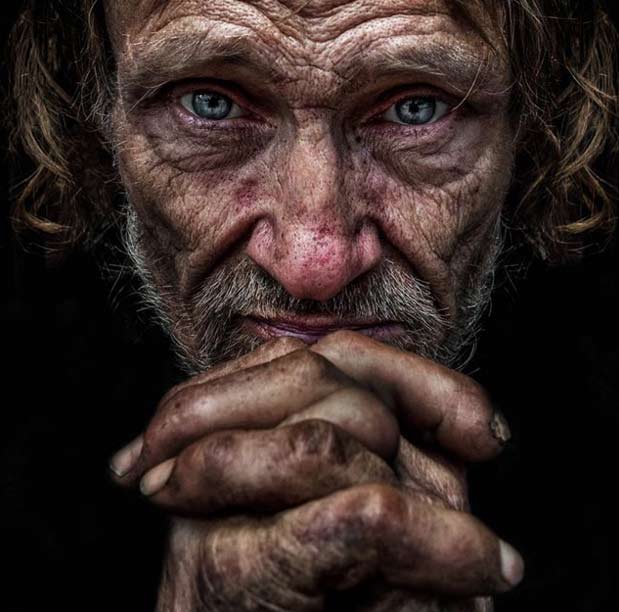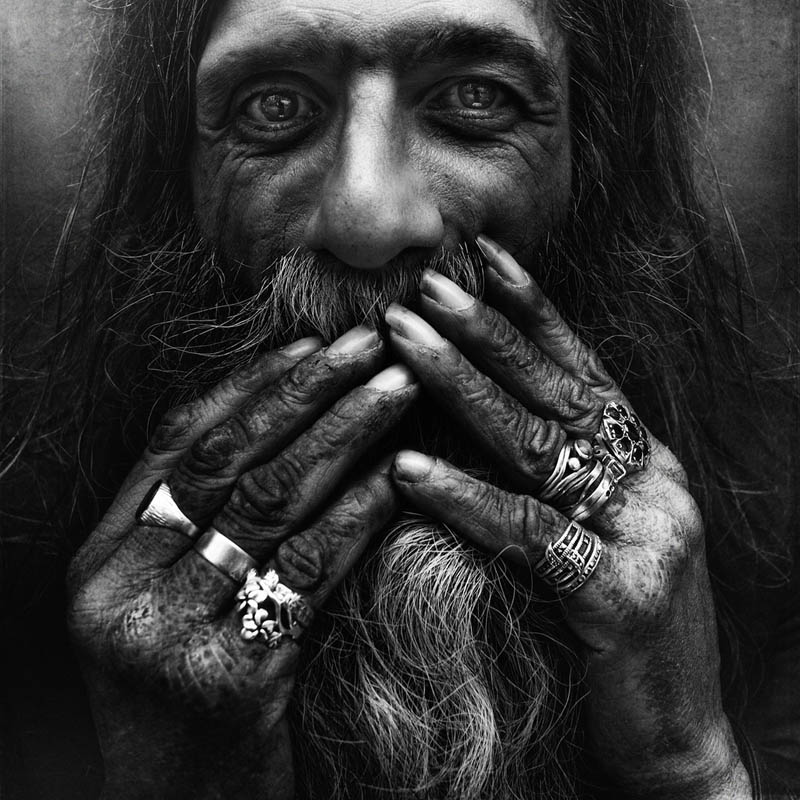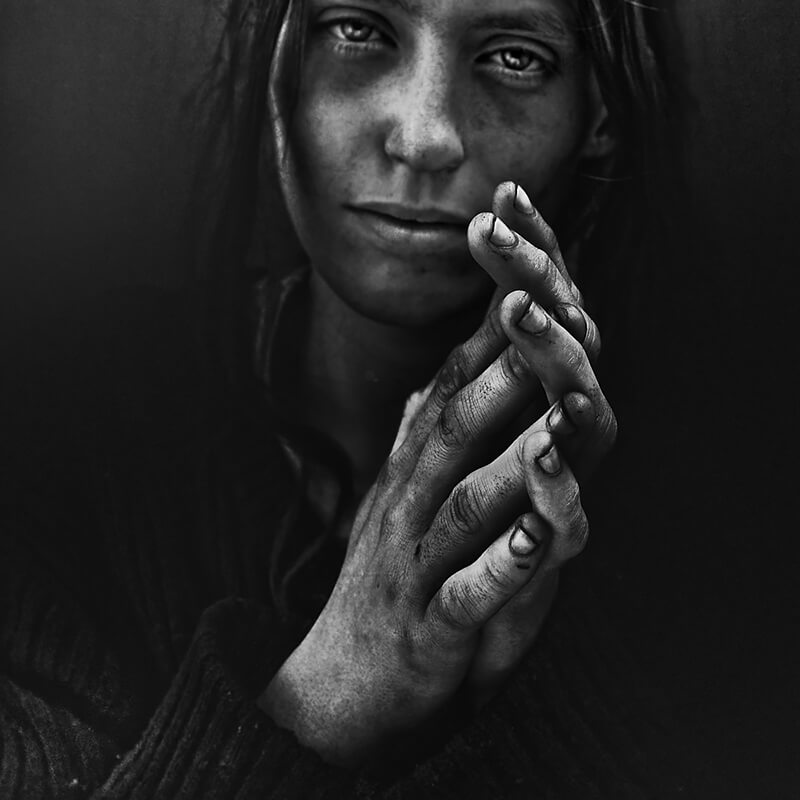A lot of emotion is meant to be felt when looking at Lee Jefferies work especially the images from his photography project called “Homeless”, the emotions felt when looking at these photos are meant to be something which observers rarely experience in front of photographs. This might be because these are mean to be raw photographs as if you are looking at these people in person. Of course the camera still has to be used to capture the image but on the other side of the lens there is a real person. On the bodies and faces portrayed the signs of devastation due to an existence without any warmth, the closest thing these people get to happiness is from alcohol or drugs. This photographer has tried to get the models too look into thew camera lens and has tried to get them to make the emotions across the observer. His main question from this project is ” What is left of such a person?” . The darkness and lack of exposure is meant to represent how little the homeless have and the little bit of light and hope that they do get is vigorous and violent (the flash from the camera). Lee Jeffries portrays those without a home, without a land, without anything, is the same way that light has emerged from the faces of sinners, saints, common men and women painted or sculpted in marble at the feet of the Divine, such as Jesus Christ or the Virgin Mary, by artists such as Caravaggio, Leonardo, Michelangelo, Bernini, and in the greatest art pieces of European Renaissance. His work is said to not just be looked at as photography, but as “Sacred Art”, And this is what remains of Jeffries’ “divine tragedy”: the Sacred, the real meaning of being Human, too Human, in the descent towards the netherworld and return to Heaven.” All of this project links to identity and the “loss of identity” as these homeless people has expressed what little they have which prevents them from expressing themselves.
Photo Analysis

Technical
Lighting – The lighting used for this photograph is most likely flash or a spotlight using one point lighting (chiaroscuro), as it looks like the model is in a studio due to the the plain background behind her. The flash seems to be directed and position to lead towards the top of the models body as the photo is more shaded towards the bottom.
Aperture – The depth of field seems to be shallow as the photo is seems to be focused and sharpened mostly around the centre of the photo where the face and hand is.
ISO – The photo seems to have a very low sensitivity meaning it the photo appears to be grainier than usual. There is also a lot of tonal range and contrast.
Visual
In this photograph there seems to be a lot of tonal range especially when looking at model against the black backdrop. The viewer is able to the all the textures and blemishes on the woman’s face due to the sharpness of the photo. The photo is 2D although the model is in such high definition that the woman can appear as if she is being seen my our own eyes rather than through a photo allowing there to be a slight 3D concept. There is a repetition of white dots on the woman’s clothing and in many of Jefferies photos there seems to be drastic tones, shadows and highlights. The model fills up the majority of there space in the photograph although there is dome space on the side of the photograph in order for the woman to contrast with such a dark background.
Contextual/Conceptual
A lot of emotion is meant to be felt when looking at this photograph, the emotions felt when looking at this photo is meant to be something which observers rarely experience in front of photographs. This might be because the photo is meant to be a raw photograph as if you are looking at the person in real life. Of course the camera still has to be used to capture the image but on the other side of the lens there is a real person. On the body and face portrayed the signs of devastation due to an existence without any warmth.







